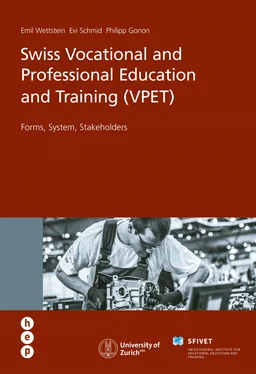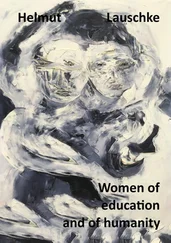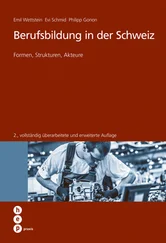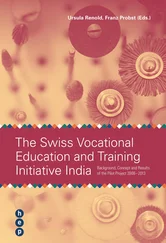The programme is designed for young people who, on account of learning difficulties or impaired performance, do not – or do not yet – meet the requirements of a two-year VET programme with Federal VET Certificate.
The PrA is geared towards simple, occupation-specific activities, it aims for close practice orientation and attaches great value to individual coaching as well as learning and training fields appropriate for the particular level (Sempert & Kammermann, 2010). To promote permeability to two-year VET programmes, the structure of the PrA is adapted to that of the corresponding VET programme with Federal VET Certificate.
An initial evaluation of the PrA reveals that the new training course is basically welcomed. The success of the measure is rated differently, however: around a third of the learners can be integrated into professional life after completing the PrA – in some cases with a disability pension. The rate of transfers to a two-year VET programme is around ten per cent (Insos, 2013). The Federal Social Insurance Office FSIO has, therefore, tightened the criteria for the funding of the training via the disability insurance as part of DI revision 6b: now, only those young people for whom, half a year after the start of the PrA, a later integration into working life seems realistic shall be able to continue and complete their training. Insos and other associations disagree with this change. They argue that – especially in the case of young people who need more time on account of an impairment – the decision whether they can complete their vocational training or not should not be taken so soon after the start of their training.
1.9 Forms characterised by social pedagogy
With some providers of VET programmes, social pedagogical measures represent an important complement, without which the objective could not be reached.
Social pedagogy and vocational pedagogy
Social pedagogy and later vocational pedagogy as areas of educational thinking and acting arose at the transition from the 19th to the 20th century. In the 19th century, the situation of the poor and later the “social question” influenced the socio-political discussion. In the writings of the pedagogue Johann Heinrich Pestalozzi, “education for poverty” was regarded as an important objective in the education of the individual, i.e. to educate hard-working, socially and – also in a religious respect – morally responsible people for the economy and society (Gonon, 2005).
In the course of industrialisation, protective measures for children and youths were discussed, ordered and implemented when compulsory school attendance had already been introduced. The particular emphasis of the socially and societally precarious situation of many young people led to the development of a particular direction in pedagogy, “social pedagogy”, which, according to Paul Natorp, had to be geared towards social reform of society as education aiming at the individual will (Gonon, 2009a). Help and support are the two main pedagogical motives and measures. Vocational pedagogy, however, which developed later, emphasised education on the civic role and responsibility as well as professional qualification.
1.9.1 Definition, variants
Forms of VET courses characterised by social pedagogy often combine career preparation measures with VET at the workplace in an institution, followed by – socio-pedagogically supported – training in companies:
•Homes for young people: assisted living in conjunction with an internal training programme (professional integration programme, vocational training) or an external day centre (vocational training, school); one example is the Gfellergut centre in Zurich.
•Establishments for juvenile male delinquents and young adults in closed and open departments, where measures for young adults are implemented according to Art. 61 of the Schweizerisches Strafgesetzbuch or StGB (Swiss Criminal Code), protective measures according to Art. 15 and 16 of the Bundesgesetz über das Jugendstrafrecht or JStG (Juvenile Criminal Code) and/or custodial sentences for youths according to Art. 25 JStG. Examples are the facilities for the execution of measures at the Massnahmenzentrum Uitikon, Zurich, and the Arxhof in Niederdorf, Basel Landschaft.
•Cooperative training associations with a socio-pedagogical focus which are active on behalf of people who “have to approach permanent (re-)entry into professional life or VET with difficult conditions” (Overall Basel, 2013). One example is the association axisBildung, Bülach (cf. Chapter 1.9.2, p. 58)
•Education and training institutions whose activities are focused on preparing people for working life, i.e. facilitating the transition from compulsory education to basic training, for example Impulsis Zurich and “Einstieg in die Berufswelt” (Entry into the World of Work) in Baar.
•Training facilities “for young people in particular circumstances” who are looking for “particular” pathways in order to enable their learners to enter the regular labour market and, therefore, have a self-determined life. The best-known training facility of this kind is the Stiftung Märtplatz (“market place” foundation) in Rorbas-Freienstein, Zurich. In its own workshops or at regional companies, Märtplatz looks for a training programme which meets the needs of the respective person as closely as possible and even prepares for qualifications of other European countries if no suitable qualification is regulated in Switzerland for the respective learner.
Measures characterised by social pedagogy are not self-supporting. Although productive work is carried out in most of these institutions, like at trade schools and other school-based VET programmes, this is primarily a means to an end and not the purpose of the institution. The deficits are largely borne by the authorities which place the learners: social security institutions (disability insurance, supplementary benefits), youth custody, labour market authorities (Arbeitslosenversicherungsgesetz or AVIG – Unemployment Insurance Act), welfare authorities, promotion of integration.
axisBildung, Bülach
axisBildung is a cooperative training association with an office in Bülach. The organisation provides a wide range of VET-oriented programmes for around 170 learners. The low-threshold training places are offered both in companies which belong to the association (i.e. in a protected environment) and also in companies of the free market. The body responsible for axisBülach is an association.
Young people are assigned via youth advocacies, guardianship authorities, departments of outpatient youth welfare and social welfare or as part of first-time vocational measures via branches of the disability insurance.
axisBildung was created in 1998 as an attempt to implement the idea of putting people in a comprehensive sense in the centre of economic activity and assuming and implementing ecological and social responsibility within economic and societal contexts.[7] In this regard, individually designed integration and training places close to normality were created so that young people with a difficult background are able to enter working life: work as meaningful and educational stimulus, training as the school of life, the social interaction and relationships as a personal development opportunity.
In 2013, axisBildung and 15 affiliated companies offered training places in 22 occupations and at the levels of PrA (see 1.8.7 above), informal VET programmes (Anlehre), Federal VET Certificate (EBA) and Federal VET Diploma (EFZ). axisBildung is a host company network recognised by the Mittelschul- und Berufsbildungsamt (cantonal Office for Upper-Secondary Education and Training) in Zurich. In Phases I and II, (cf. Fig. 1-7) the training is in a protected environment at the affiliated companies of axisBildung, which include a bakery, a garden company, two domestic servicing and maintenance companies, a restaurant and four groceries. The transition to Phase III, i.e. to a company of the free economy, is possible at any time. In the affiliated companies, there is one social pedagogue per twelve learners on-site as part of the team.
Читать дальше












